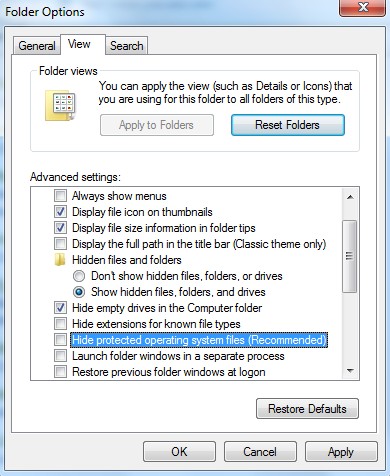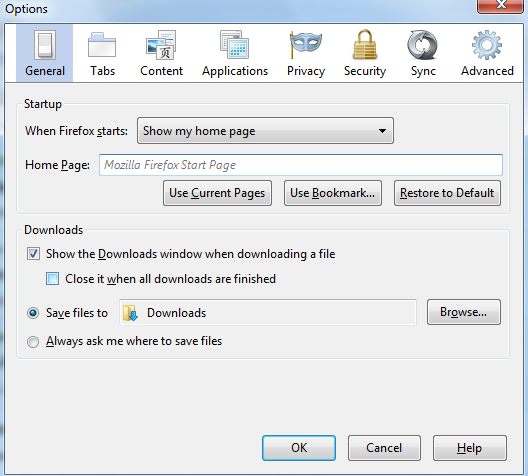Cloud-connect.net web page keeps popping up on my browser. What do I do to stop this odd action? Also, with this constant pop up I can’t browse other web sites properly as usual. I will be redirected back to this certain web site or other similar ones all the time. Will a reinstall of the browser help fix this problem? Do I have to worry about my personal data? What can I do to stop these abnormal activities?
Cloud-connect.net – How to Remove Browser Hijacker
Cloud-connect.net appears to be a common web site which is similar to the Builathome.info redirect. Judged from its characters and behaviors on computer, it is therefore categorized as a browser hijacker as well. This browser hijacker, being able to compromise browsers including Internet Explorer, Google Chrome and Firefox on Windows OS, can somehow get itself installed on targeted computers without consent from PC owners. Hence, it’s unwanted by many. Computer users who have got this Cloud-connect.net redirect pop up will find it difficult to surf the Internet because they can’t browse through web sites properly without the interruption of this specific site. The overall performance of the browser will be affected as well as the security of the computer. This browser hijacker should be removed ASAP to prevent any possible damage from happening.
Cloud-connect.net redirect can be distributed online through malicious freeware and spam attachments. It can be downloaded together with these resources into targeted computers and start chaos on Internet browsers first. With a few changes of the browser default settings, this site can annoyingly pop up all the time whenever you try to get online to browse web sites. Also, you will get a different home page on browsers related to this hijacker. Default search engine can also be missing from the page. We believe that browser hijackers like this Cloud-connect.net redirect can use cookie or pay-per-click technique to help cyber criminals benefit. Cookie is originally set up to help enhance users’ online experience. In this case, it can be used by this hijacker to trace down users’ online activities and record their browsing histories. These records and data are very helpful to cyber criminals. Hence, one should mind his privacy security issues when encountering this Cloud-connect.net hijacker on the computer.
To avoid all the possible consequences from happening to damage your computer in any part, contact YooSecurity Online PC Experts to get help if you are not familiar with virus removal especially this Cloud-connect.net redirect.

Cloud-connect.net Redirect Consequences
1. This hijacker can reset the default structures of browsers and set related sites as the new home page;
2. PC users will have difficulties whenever surfing online because they will keep being redirected to unwanted places;
3. There may be many pop ups constantly showing to interrupt your online browsing;
4. The overall performance of the browser(s) will be affected by this hijacker causing incredible slowness during operating;
5. Computer users may suffer from privacy stealing activities;
6. Other malware or spyware can be prompted by this hijacker to install on users’ computers to cause more problems.
A Step-by-step Browser Hijacker Manual Removal Instruction
Usually, antivirus programs can’t detect or delete this Cloud-connect.net redirect virus. And since this hijacker can cause so much trouble on the computer, a complete removal is needed to get browser(s) back to working properly again. Manual removal steps are suggested here as the process guarantees a complete removal. Please follow the basic steps below to get started right away (expertise will be required during the manual removal process):
Step A: Open Windows Task Manager to end process related to the Cloud-connect.net redirect. To do that, press Ctrl+Alt+Del keys at the same time to pull up Window Task Manager; go to Processes tab on top and scroll down the list to find.

Step B: Open Control Panel from Start menu and search for Folder Options. Go to Folder Options window, under View tab, tick Show hidden files and folders and non-tick Hide protected operating system files (Recommended) and then click OK.

Step C: Press Windows+R keys to pull up Run box and type in regedit to open Registry Editor.

Step D: Delete all these associated files and registry entries with this Cloud-connect.net hijacker in Registry Editor as below:
%AppData%\[rnd]
%AllUsersProfile%\Programs\{random}\
%CommonStartMenu%\Programs\Users\””
HKCU\SOFTWARE\Microsoft\Windows\CurrentVersion\Regedit
HKEY_CURRENT_USER\Software\Microsoft\Windows\CurrentVersion\Policies\System “DisableRegedit”
HKCU\SOFTWARE\Microsoft\Windows\CurrentVersion\Settings\{.exe}
Step E: Change home page back from this unwanted Cloud-connect.net redirect site on browsers.

Video Guide on Browser Hijacker Removal:
Conclusion
Internet browsers being hijacked by browser redirect viruses is a common phenomenon nowadays to many PC users. A computer will still be vulnerable to such hijackers even when they have got antivirus protection. Being able to get itself installed via bundling with freeware or spam attachments, this Cloud-connect.net redirect can affect most browsers installed on Windows OS. Once it’s successfully installed, it can change the default home pages on browsers to its own domain. And by popping up constantly, it can interrupt PC users’ online surfing activities. Browser hijackers are believed to help cyber criminals benefit with the records they’ve collected from the infected browsers including surfing habits of the owners and browsing histories. These can be done via using cookie. In other words, privacy security is being threatened by this browser hijacker besides from all the other consequences that one can see on his browser(s) or computer. Therefore, getting rid of Cloud-connect.net redirect is important for keeping PC safe and away from other potential threats from the Internet.
Note: Have tried but still failed to delete Cloud-connect.net hijacker from the computer? Please contact YooSecurity Online Experts to get further help.

Published by Tony Shepherd & last updated on August 3, 2013 4:05 am











